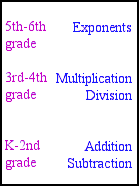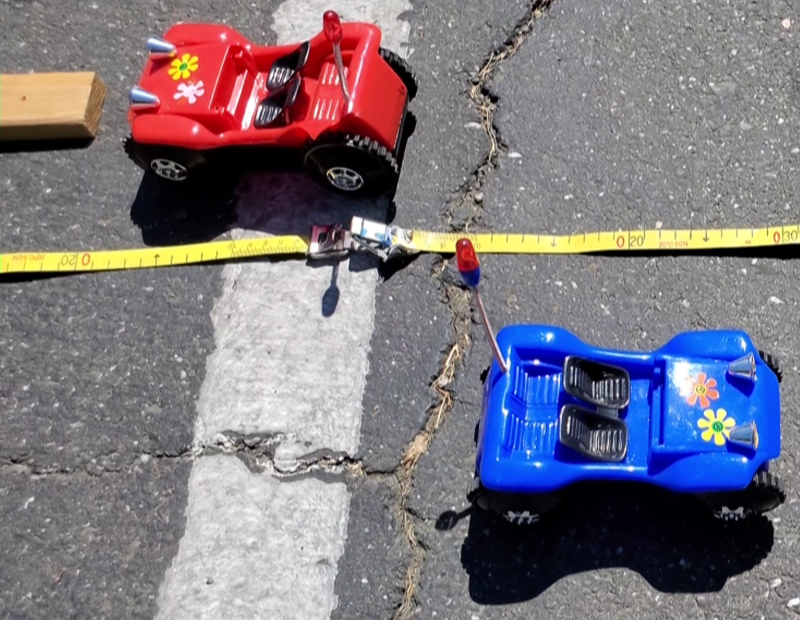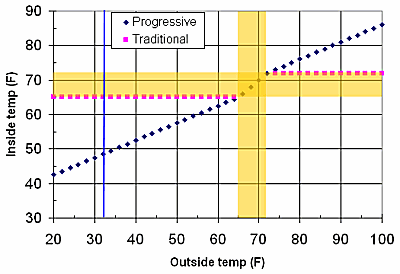Order of operations in math equations; a new take on explaining PEMDAS
A recent discussion on the NSTA physics teacher list, the question of “order of operations” came up. In math, the order of operations defines which operations (addition, subtraction, multiplication, etc.) one performs first. A writer asked for solutions to the following expressions:
- 2 + (3 x 2) + 3
- (2 + 3) x (2 + 3)
- 2 + 3 x 2 + 3
- (2 + 3) x 2 + 3
Most responders use the correct order of operations (PEMDAS: Parentheses, Exponents, Multiplication/Division, Addition/Subtraction) and got the right solutions…but a few did not.
One of the concerns of “PEMDAS” is it’s just another memory device that helps students get the right answer but not necessarily understand why it is the right answer. As physics teachers, a few people raised the concern that is the abstraction of math that results in the need for an order of operations–that in physics, the order is clear in the nature of the problem.
Let’s look at two examples that both could be written as
$latex y = 10 * 6 + 5$
1) “Where will I end up if I’m traveling 10 m/s for a period of 6 seconds and I started at the 5 meter mark?”
The equation ends up as:
$latex x_{f}=10\frac{m}{s}\ast 6s+5m$
$latex x_{f}=65m$
VS
2) “How far will I travel if my speed is 10 m/s for six seconds, then for another five seconds?”
This equation ends up as:
$latex distance = 10\frac{m}{s} * (6s + 5s)$
$latex distance = 110 m$
The order of numbers and operators in the equations are identical, but the order we naturally process them is different. If all we have is 10*6+5, we need rules to explain which order to process them in.
I’m trying to think a bit of the logic behind it the PEMDAS rule (and something in me always wants to call it pemdOs, but I have the same problem with SOHCAHTOA). Here is how I will describe it to my students next time it comes up:
Essentially, we do math problems from left to right, just like we read. But sometimes we need to have equations solved in a different order, so we have a few rules (which is really only one rule, the accepted order of operations):
- Start by remembering that in equations, just like in English, parentheses mean look at this separately. So solve anything in a parentheses as if it were its own equation.
 In solving the equation, start with the operation you learned last in your math education: Exponents (squares and square roots; remember that these are based on the same principal, one just sort of “undoes” the other).
In solving the equation, start with the operation you learned last in your math education: Exponents (squares and square roots; remember that these are based on the same principal, one just sort of “undoes” the other).- Next, go to the operation you learned before that, multiplication and division (again, sort of the opposites of each other, but the same family).
- Finally, do the operations you learned in first grade (or kindergarten, or at home before that?), addition and subtraction.
And there are other operations that PEMDAS doesn’t address including trig functions and logs. Which is, I guess, why we often use parentheses after these operators:
$latex y= \cos 32 \ast \log (\frac{200}{20})$
Like many of you may be, I am tired of students being taught mnemonics and other “tricks” to remember details that they can understand. In some cases, memorization is necessary, since there is no logical argument for why it works that way…but in science, our whole reason for being is to find logic in the world. So, if my French teacher teaches me a mnemonic to remember which of the common animals are masculine and which are feminine, that’s probably a good tool. But in science, we’ll continue to look for the rationales behind our use of “rules.” (Of course, there are many life science facts that need memorization.)
Remember, God did not hand down PEMDAS. Some early folks decided on the order of operations, and everyone agreed to go along with that. If you try to drive on the left hand side of the street anywhere but the UK, you’re likely to cause an accident. If we wanted to use SADMEP instead, there would be nothing wrong with that, as long as everyone did it.
Happy equating 🙂
Lee
PS. Need the answers to the initial problems?
- 2 + (3 x 2) + 3 = 2 + 6 + 3 = 11
- (2 + 3) x (2 + 3) = 5 x5 25
- 2 + 3 x 2 + 3 = 2 + 6 + 3 = 11
- (2 + 3) x 2 + 3 = 5 x 2 + 3 = 10 + 3 = 13
PPS. I asked my stepdaughter (a junior, who is in AP Calc and Physics) how she would handle this in the calculator. She said she adds lots of parentheses in her calculator to ensure the calculator solves it the way she wants. Absolutely nothing wrong with this, in my opinion–however if she were confident that the calculator would follow PEMDOS, oops, PEMDAS, she would need fewer parentheses. But the important thing, I believe, is that she knows how to add parentheses to ensure the machine processes the numbers in the order she desires 🙂





